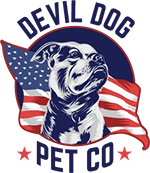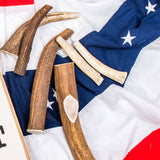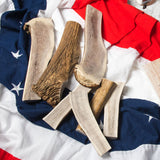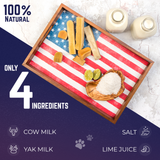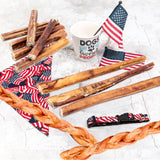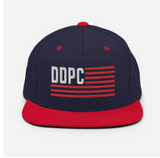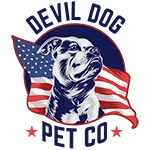Key Takeaways
- A hedgehog toy is an enrichment object designed to promote physical activity, mental engagement, or natural behaviors in hedgehogs.
- Examples of hedgehog toys include exercise wheels, tunnels, foraging puzzles, chew items, and interactive balls.
- Hedgehog toys help prevent boredom-induced stress behaviors in pet hedgehogs.
- These toys encourage natural foraging and exploration instincts in hedgehogs.
- Pet hedgehogs need 30-60 minutes of active engagement daily to maintain health and avoid destructive behaviors.
Table of Contents
- What Is a Hedgehog Toy? Clear Definition and Primary Uses
- Types of Hedgehog Toys, Complete Overview with Purpose-Driven Examples
- Safety First, Material Choices, Sizing, and Hazard Prevention
- How to Choose the Right Hedgehog Toy, Personalization and Environmental Fit
- Practical Guide, Introducing and Rotating Hedgehog Toys for Maximum Engagement
- Cleaning & Maintenance, Exact Methods by Toy Type
- Store-Bought vs. DIY Hedgehog Toys, Cost, Customization, and Safety Comparison
- Common Hedgehog Toy Challenges & Solutions
- Devil Dog Pet Co's Commitment, Veteran-Rooted Advice on Safe Enrichment
- Future Considerations & Innovation in Hedgehog Enrichment
- Expert Recommendations & Final Verdict
What Is a Hedgehog Toy? Clear Definition and Primary Uses
These specialized tools serve three critical functions: preventing boredom-induced stress behaviors, encouraging natural foraging and exploration instincts, and providing essential physical exercise. Pet hedgehogs require 30-60 minutes of active engagement daily to maintain optimal health and prevent destructive behaviors like excessive quill loss or cage aggression. Chew items can be especially beneficial for stress relief and dental health.
Unlike generic small animal toys, quality hedgehog toy designs account for their unique needs, nocturnal activity patterns, natural burrowing instincts, and their tendency to explore through scent and touch rather than sight. For those seeking safe and durable options, natural wood or antler chews are excellent choices for hedgehogs that enjoy gnawing.
Types of Hedgehog Toys, Complete Overview with Purpose-Driven Examples

| Toy Type | Primary Purpose | Usage Tip |
|---|---|---|
| Tunnels/Tubes | Security, hiding, exploration | Minimum 4" diameter; rotate weekly |
| Exercise Balls | Physical activity, prey drive | Supervised 10-15 minute sessions |
| Foraging Puzzles | Mental stimulation, treat dispensing | Hide mealworms inside; reset daily |
| Chew Toys | Dental health, stress relief | Natural wood or safe plastic only |
| Plush Hideouts | Comfort, temperature regulation | Machine washable fleece preferred |
Tunnels satisfy their instinctual need for secure pathways, choose fleece-lined options at least 1.5 times your hedgehog's width. Exercise balls encourage natural roaming behaviors but require constant supervision to prevent overheating. Foraging puzzles tap into their insectivore hunting instincts, making mealtime mentally engaging rather than passive consumption.
For more insights on animal enrichment and behavioral health, you might enjoy this article on why pets display certain behaviors.
Safety First, Material Choices, Sizing, and Hazard Prevention
Toxic materials pose serious risks to hedgehogs' sensitive respiratory and digestive systems. Avoid any toy containing PVC, painted surfaces with unknown dyes, or small detachable parts under 1 inch diameter. BPA-free hard plastics, untreated natural wood, and tight-weave fleece represent the safest material choices.
Size selection prevents choking hazards, every hedgehog toy should measure at least 1.5 times your pet's body width. Inspect weekly for sharp edges, loose threads, or stress cracks that could trap tiny paws or create ingestion risks. If you’re looking for a safe and long-lasting chew, Himalayan chews are a great alternative to plastic or synthetic options.
How to Choose the Right Hedgehog Toy, Personalization and Environmental Fit
Match toy selection to your hedgehog's behavioral profile. Active explorers thrive with tunnel systems and climbing structures, while cautious personalities prefer stationary hideouts and gentle puzzle feeders. Age factors significantly, young hedgehogs need high-stimulation options like treat balls, while seniors benefit from softer, easily accessible comfort items.
Environmental constraints shape practical choices. Cages under 4 square feet limit tunnel configurations, making vertical hideouts and compact puzzle toys more suitable. Observe interaction patterns for one week, then rotate unsuccessful options for alternatives that align with demonstrated preferences.
Practical Guide, Introducing and Rotating Hedgehog Toys for Maximum Engagement

Introduce new toys during evening hours when hedgehogs naturally explore. Place unfamiliar items near established favorite spots, allowing scent investigation before direct interaction. Start with 5-10 minute supervised sessions to gauge interest and safety.
Implement a rotation schedule every 2-3 days to maintain novelty without overwhelming your pet. Store unused toys in your hedgehog's bedding to retain familiar scents. If initial interest wanes, try scent transfer by rubbing the toy with used bedding or placing a single mealworm nearby to create positive associations.
Cleaning & Maintenance, Exact Methods by Toy Type
Regular cleaning prevents bacterial buildup that threatens hedgehog health. Hard plastic toys require warm water and unscented soap twice weekly, rinse thoroughly and air dry completely. Fabric items need gentle machine washing in mesh laundry bags, with full air drying to prevent mold formation.
Wood toys demand spot-cleaning only using damp cloths, never soak, as moisture causes rot and splinters. Replace any hedgehog toy showing persistent odors, stains, or structural compromise that cleaning cannot resolve. For more tips on keeping your pet’s environment safe, check out which human foods are toxic to dogs, many of the same safety principles apply to hedgehogs.
Download the FREE 10-Step Dog Prep Guide
Store-Bought vs. DIY Hedgehog Toys, Cost, Customization, and Safety Comparison
| Factor | DIY Options | Store-Bought |
|---|---|---|
| Average Cost | $2-5 per toy using household items | $8-25 for quality commercial options |
| Safety Standards | Requires owner knowledge and testing | Manufactured to pet safety regulations |
| Durability | Limited; frequent replacement needed | Engineered for extended use |
| Customization | Perfect size and feature matching | Standard sizes may not fit all cages |
DIY toilet paper roll tunnels cost pennies but require careful preparation, remove all adhesive residue and ensure tube diameter exceeds 4 inches. Commercial fleece hideouts offer consistent quality and washability but lack the perfect fit achievable with custom measurements.
The optimal approach combines both strategies: use DIY options for testing preferences and size requirements, then invest in durable commercial versions of proven favorites. This hybrid method maximizes both budget efficiency and long-term hedgehog toy satisfaction. For a wide selection of safe and durable options, browse premium grade-A elk antler dog chews for enrichment and chewing needs.
Common Hedgehog Toy Challenges & Solutions

Wheel Size Requirements: Choose wheels with 12+ inch diameter and solid running surfaces. Wire or mesh wheels cause foot injuries, while undersized options force unnatural spine curvature that leads to back problems over time.
Repurposing Cat/Dog Toys: Simple, non-motorized options work safely, avoid anything with catnip, squeakers, or small bells. Tennis balls designed for large dogs provide appropriate size ratios, while cat tunnels often match hedgehog proportions perfectly. If you’re interested in more options for small pets, check out our collection for small dogs, many items are suitable for hedgehogs as well.
Rotation and Replacement Schedule: Rotate active toys weekly to maintain engagement, retiring any item showing wear, loose components, or persistent odors. Plush toys remain safe provided seams stay intact and stuffing contains no harmful chemicals.
When hedgehogs ignore all enrichment options, reduce cage lighting during introduction periods and ensure toys appear during natural evening activity hours. Persistent avoidance typically indicates stress from environmental factors rather than toy selection issues.
Devil Dog Pet Co's Commitment, Veteran-Rooted Advice on Safe Enrichment
Responsible enrichment prevents the behavioral deterioration that leads to pet surrender, a mission we take seriously through our military-inspired approach to animal welfare. Just as K9 units require structured engagement protocols, hedgehogs thrive under consistent leadership that prioritizes safety alongside stimulation.
Devil Dog Protocol: Supervise every first interaction, inspect weekly for damage, and model confidence during toy introductions. Your calm energy encourages exploration while maintaining protective oversight.
Quality hedgehog toy selection demands the same attention to detail we apply to our premium chews, thorough vetting, ethical sourcing, and uncompromising safety standards that keep beloved pets healthy and engaged in their forever homes. For more information on toy safety standards, visit the Consumer Product Safety Commission's toy safety resource.
Future Considerations & Innovation in Hedgehog Enrichment
Smart technology integration shows promise for hedgehog toy advancement, with motion-activated tunnels and app-controlled feeding puzzles entering the exotic pet market. These innovations address the challenge of providing stimulation during owners' work hours while maintaining the hands-on supervision essential for safety.
Sustainable materials represent another emerging trend, with manufacturers developing biodegradable alternatives to traditional plastics. Hemp-fiber tunnels and bamboo exercise components offer environmental benefits without compromising durability or hedgehog safety standards.
Temperature-regulating materials may revolutionize comfort-focused toys, incorporating phase-change fabrics that maintain optimal warmth levels during hedgehogs' active evening periods. This technology could eliminate the common problem of hedgehogs avoiding toys in cooler environments. For a look at innovative hedgehog toys, see the Bristle Hedgehog toy example.
Expert Recommendations & Final Verdict
Successful hedgehog toy programs prioritize safety over novelty, emphasizing proven enrichment principles rather than trending gadgets. Start with fundamental categories, secure hiding spots, appropriate exercise wheels, and safe chewing options, before expanding into specialized puzzle feeders or interactive elements.
The most effective approach combines 3-4 core toys rotated systematically rather than overwhelming cages with excessive options. Quality fleece tunnels, properly sized wheels, and carefully selected foraging toys create comprehensive enrichment that addresses hedgehogs' primary behavioral needs without introducing unnecessary complexity. For more enrichment ideas and pet care tips, visit the Devil Dog blog.
| Priority Level | Toy Category | Essential Features | Budget Range |
|---|---|---|---|
| Essential | Exercise Wheel | 12"+ diameter, solid surface | $25-45 |
| Essential | Hiding Tunnel | Machine washable, 4"+ opening | $8-15 |
| Recommended | Foraging Toy | Treat-dispensing, BPA-free | $12-20 |
| Optional | Puzzle Feeder | Adjustable difficulty, easy cleaning | $15-30 |
Monitor individual responses closely during the first month, adjusting selections based on actual usage patterns rather than assumed preferences. Hedgehogs demonstrate clear favorites through consistent interaction, making personalized curation more valuable than comprehensive toy collections. For a variety of enrichment options, explore our shop all products page.
Devil Dog Leadership Principle: Take ownership of your hedgehog's enrichment success by establishing consistent routines, maintaining equipment properly, and adapting strategies based on observed results rather than generic recommendations.
The ultimate hedgehog toy strategy combines disciplined safety protocols with creative enrichment solutions, ensuring every interaction builds confidence and natural behaviors. This veteran-inspired approach to pet care creates lasting bonds while preventing the behavioral issues that lead to surrender situations.
Download the FREE 10-Step Dog Prep Guide
Frequently Asked Questions
What types of toys are best suited to meet the physical and mental needs of pet hedgehogs?
Tunnels, exercise balls, foraging puzzles, and chew items are ideal for hedgehogs. These toys encourage natural behaviors like exploration, physical activity, and mental engagement, helping prevent boredom and stress.
How can I ensure the safety of hedgehog toys in terms of materials and sizing?
Choose non-toxic, chew-resistant materials sized to prevent entrapment or injury. Regularly inspect toys for wear and avoid small parts or sharp edges that could harm your hedgehog.
What are the recommended daily activity durations for hedgehogs using enrichment toys?
Pet hedgehogs need 30 to 60 minutes of active engagement daily with enrichment toys to maintain health and avoid destructive behaviors.
How should I introduce and rotate different toys to keep my hedgehog engaged and prevent boredom?
Introduce new toys gradually, supervising initial interactions. Rotate toys weekly or biweekly to maintain novelty and encourage ongoing exploration and mental stimulation.
